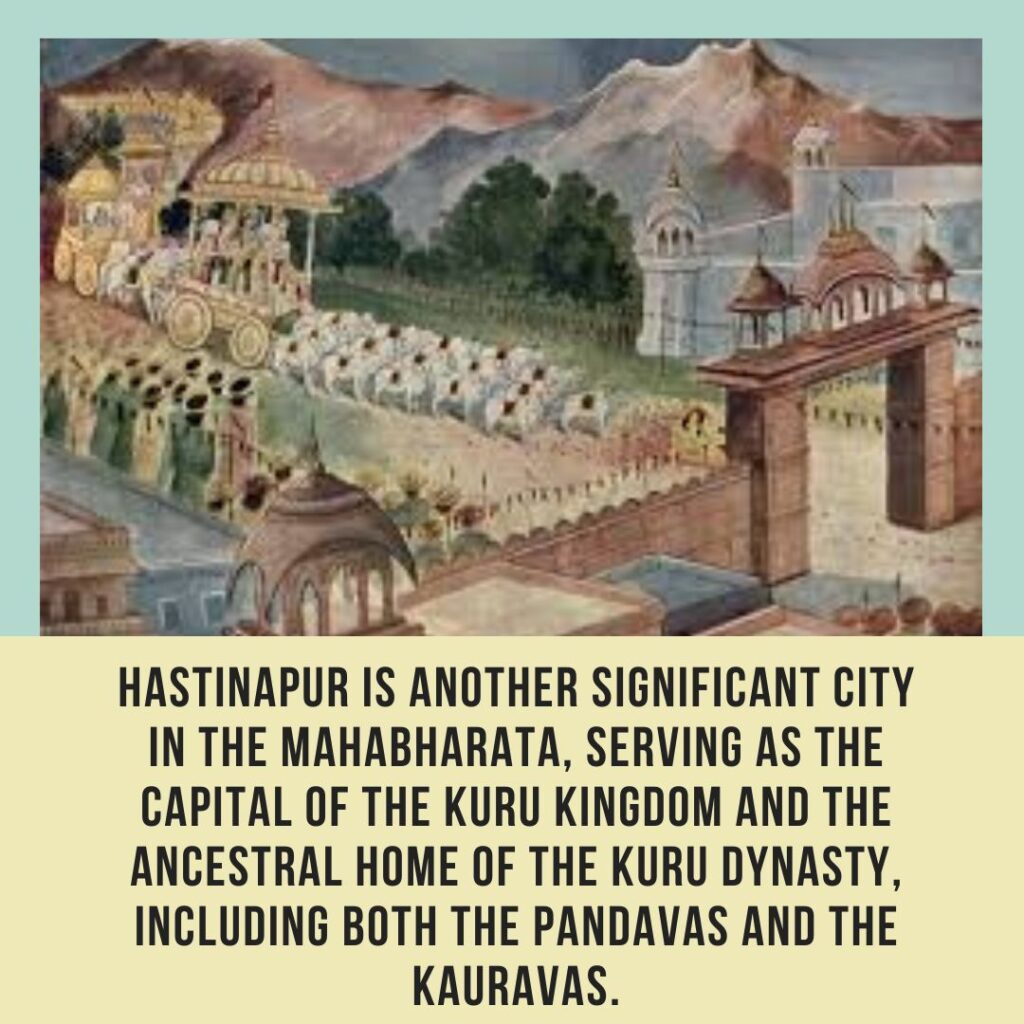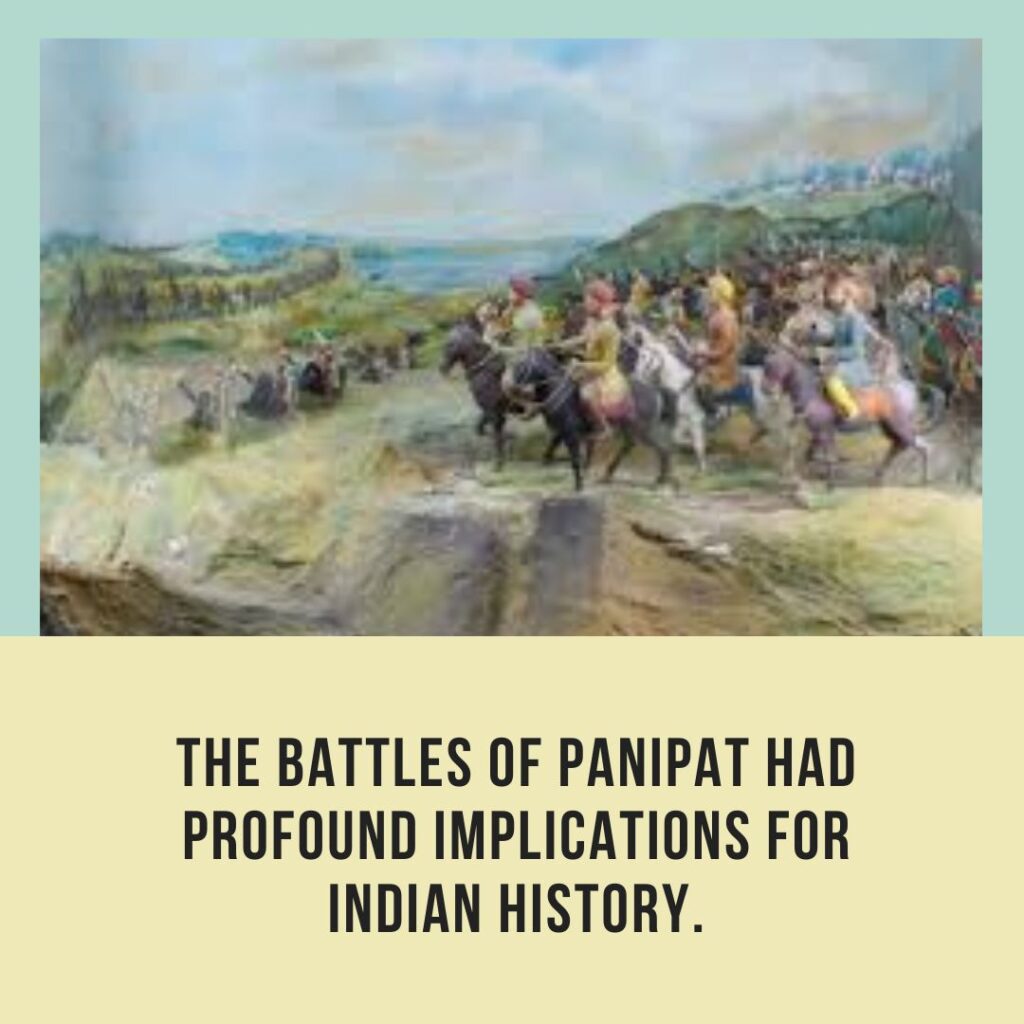In this post, notes of Unit- 1: (Ancient Delhi and Adjoining Sites – Indraprastha- Hastinapur, Panipat, Tilpat) from GE – 1: (Delhi Through Ages) are given which is helpful for the students doing graduation this year.
The historical significance of Indraprastha and its mention in ancient texts.

Indraprastha holds significant historical and cultural importance in Indian history, mythology, and literature. According to ancient Indian texts, particularly the Mahabharata, Indraprastha was a magnificent city built by the Pandavas, the protagonists of the epic. It is believed to have been located in the region of present-day Delhi, India.
Here are some key points regarding the historical significance of Indraprastha and its mention in ancient texts:
- Mahabharata: Indraprastha features prominently in the Mahabharata, one of the two major Sanskrit epics of ancient India. It is described as the capital city of the Pandavas, who ruled it after winning the great war of Kurukshetra against their cousins, the Kauravas.
- Pandavas’ Kingdom: Indraprastha was established by the Pandavas after they received the Khandava forest as a gift from Agni, the fire god. With the help of their ally Lord Krishna and the architect Maya, they built the grand city, which rivaled the splendor of the heavens.
- Architectural Marvels: According to the Mahabharata, Indraprastha was adorned with palaces, gardens, temples, and other architectural wonders. It was said to be a prosperous and opulent city, reflecting the wealth and power of the Pandavas.
- Yudhishthira’s Rajasuya Yagna: One of the most significant events associated with Indraprastha is the Rajasuya Yagna performed by Yudhishthira, the eldest Pandava. This ancient Vedic ritual was conducted to establish the supremacy of a king and involved inviting kings from various regions to pay homage to the ruler. Yudhishthira’s Rajasuya Yagna further solidified the Pandavas’ authority and prestige.
- Historical Debate: While the Mahabharata is considered a work of mythology and literature, the existence of Indraprastha as a historical city is a subject of debate among historians and archaeologists. Some scholars believe that Indraprastha might have been based on a real city or cities that existed in ancient India, while others view it purely as a legendary construct.
- Delhi’s Cultural Heritage: Regardless of its historical reality, Indraprastha remains an integral part of Delhi’s cultural heritage. The city of Delhi, with its rich history spanning several millennia, embraces the legacy of Indraprastha as part of its identity.
In conclusion, Indraprastha holds significant cultural and literary importance as the legendary capital city of the Pandavas in the Mahabharata. While its historical existence is debated, it continues to be revered in Indian mythology and serves as a symbol of ancient India’s grandeur and splendor.
Hastinapur’s role in the Mahabharata and its archaeological relevance.

Hastinapur is another significant city in the Mahabharata, serving as the capital of the Kuru Kingdom and the ancestral home of the Kuru dynasty, including both the Pandavas and the Kauravas. Here’s a breakdown of its role in the epic and its archaeological relevance:
- Mahabharata: Hastinapur is portrayed as a powerful and ancient city in the Mahabharata. It was ruled by King Kuru and later became the capital of the Kuru dynasty under various rulers. Many key events in the epic take place in Hastinapur, including the birth of the Pandavas and the Kauravas, the upbringing of the princes, and the political intrigues that lead to the Kurukshetra War.
- Royal Lineage: Hastinapur is closely associated with the royal lineage of the Kuru dynasty. The city was named after King Hastin, an ancestor of the Kuru dynasty. It served as the seat of power for generations of kings, including King Dhritarashtra (father of the Kauravas) and King Pandu (father of the Pandavas).
- Kurukshetra War: Hastinapur is the epicenter of the conflict that culminates in the Kurukshetra War between the Pandavas and the Kauravas. The rivalry between the two branches of the Kuru dynasty, fueled by jealousy, ambition, and greed, ultimately leads to the great war.
- Archaeological Relevance: While the exact location of ancient Hastinapur is a subject of debate among historians and archaeologists, it is believed to have been situated near modern-day Meerut in the Indian state of Uttar Pradesh. Excavations conducted in the region have revealed archaeological remains dating back to the Vedic and post-Vedic periods, providing insights into the urbanization and civilization of ancient India.
- Excavations: Archaeological excavations at sites identified as Hastinapur have uncovered pottery, coins, tools, structures, and other artifacts belonging to different periods of Indian history. These findings contribute to our understanding of ancient urban centers, trade networks, social structures, and cultural practices prevalent in the region.
- Historical Controversies: Hastinapur’s identification and its correlation with the Hastinapur mentioned in ancient texts remain contentious topics. Some scholars argue for a direct link between the archaeological remains and the legendary city described in the Mahabharata, while others approach the issue with caution, acknowledging the complexities of historical and textual interpretation.
In summary, Hastinapur plays a central role in the Mahabharata as the capital of the Kuru dynasty and the backdrop for many pivotal events in the epic. Its archaeological relevance offers glimpses into the material culture and urban life of ancient India, although debates persist regarding its precise location and historical significance.
The battles of Panipat and their impact on Indian history.

The Battles of Panipat are significant events in Indian history, shaping the course of the subcontinent and influencing its political, social, and cultural landscape. There were three major battles fought at Panipat:
- First Battle of Panipat (1526):
- This battle was fought between Babur, the founder of the Mughal Empire, and Ibrahim Lodi, the Sultan of Delhi.
- Babur’s victory marked the beginning of Mughal rule in India. It established the Mughal Empire as a dominant power in the Indian subcontinent.
- The battle introduced gunpowder warfare and advanced military tactics to the Indian subcontinent, revolutionizing warfare in the region.
- The defeat of Ibrahim Lodi led to the end of the Delhi Sultanate and the consolidation of Mughal power in northern India.
- Second Battle of Panipat (1556):
- This battle was fought between the Mughal Emperor Akbar and the Afghan ruler Hemu (Hemu Vikramaditya).
- Akbar’s victory secured his position as the emperor and strengthened Mughal authority in India.
- The battle marked the decline of Afghan power in northern India and the consolidation of Mughal rule.
- Akbar’s policy of religious tolerance and administrative reforms further solidified Mughal control over a diverse and expansive empire.
- Third Battle of Panipat (1761):
- This battle was fought between the Maratha Empire, led by Sadashivrao Bhau, and the Durrani Empire, led by Ahmad Shah Durrani (also known as Ahmad Shah Abdali).
- Ahmad Shah Durrani’s victory dealt a severe blow to the Maratha Empire, which was at the peak of its power at that time.
- The battle led to a significant loss of life and resources for both sides, and it weakened the Marathas’ position in northern India.
- The Durrani Empire’s control over Punjab and the northwest frontier of the Indian subcontinent was reaffirmed, preventing further expansion of Maratha influence in those regions.
Overall, the Battles of Panipat had profound implications for Indian history. They marked significant shifts in power dynamics, the rise and fall of empires, and the introduction of new military technologies and tactics. These battles also influenced the cultural exchange, economic development, and political structure of the Indian subcontinent, leaving a lasting impact on its history and identity.
Tilpat’s importance in the context of the Mahabharata and its current status.
Tilpat, also known as Tilpatraka, is believed to be associated with ancient Tilprastha, which finds mention in the Mahabharata as one of the cities ruled by the Kauravas, the rivals of the Pandavas. While Tilpat’s significance in the Mahabharata narrative is not as prominent as cities like Hastinapur or Indraprastha, it is referenced in the context of the Kaurava kingdom.
In the Mahabharata, Tilprastha is described as a prosperous city and part of the Kaurava’s dominion. However, specific events or stories related to Tilprastha are not extensively detailed in the epic, and its role remains relatively minor compared to other cities mentioned.
As for its current status, Tilpat is a village located in the Faridabad district of Haryana, India. Over time, it has evolved into a modern settlement with residential areas and agricultural lands. While there may be archaeological remains or local legends that connect Tilpat to its ancient past, its historical importance primarily lies in its potential association with the Mahabharata rather than any significant contemporary status.



